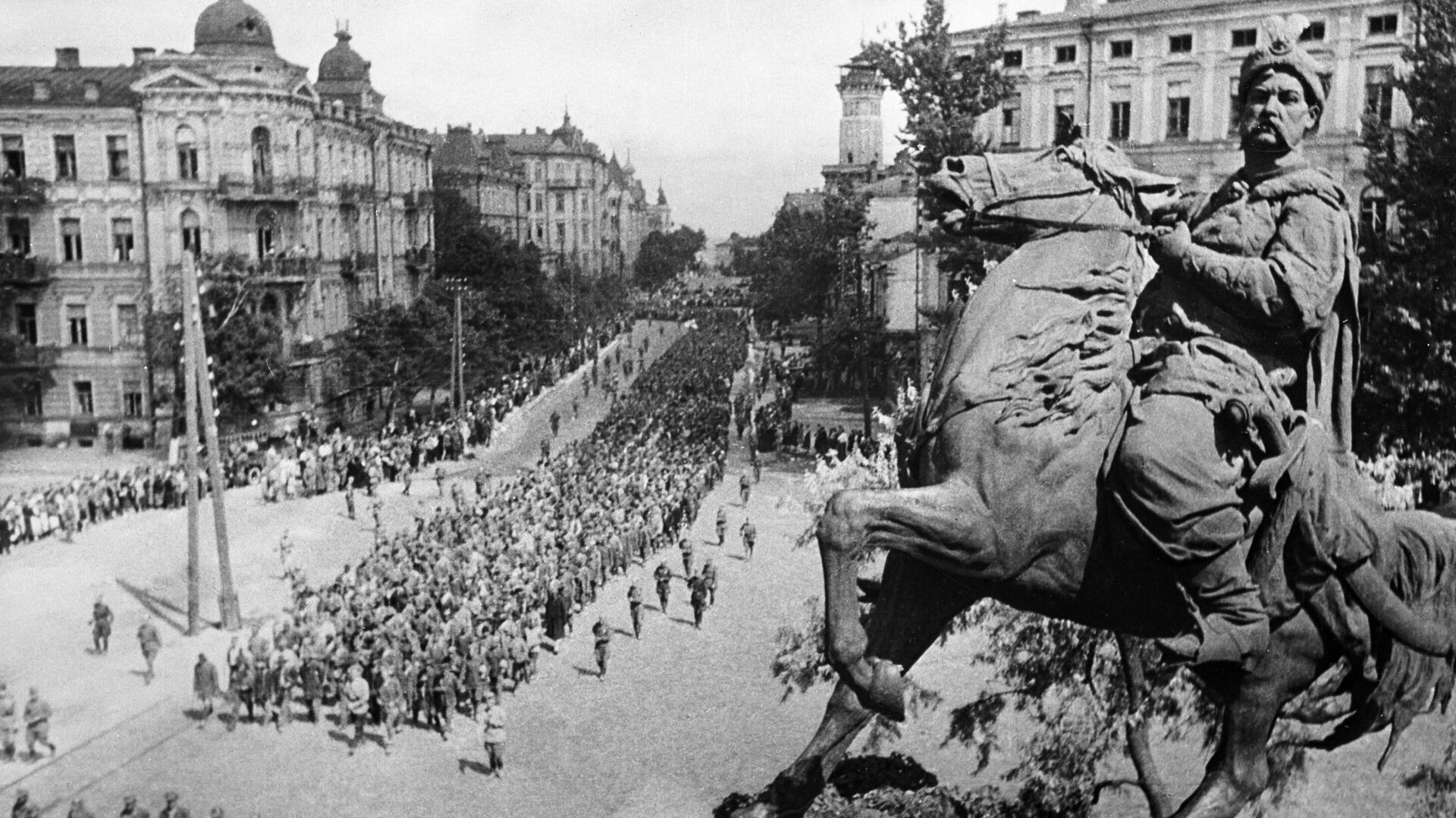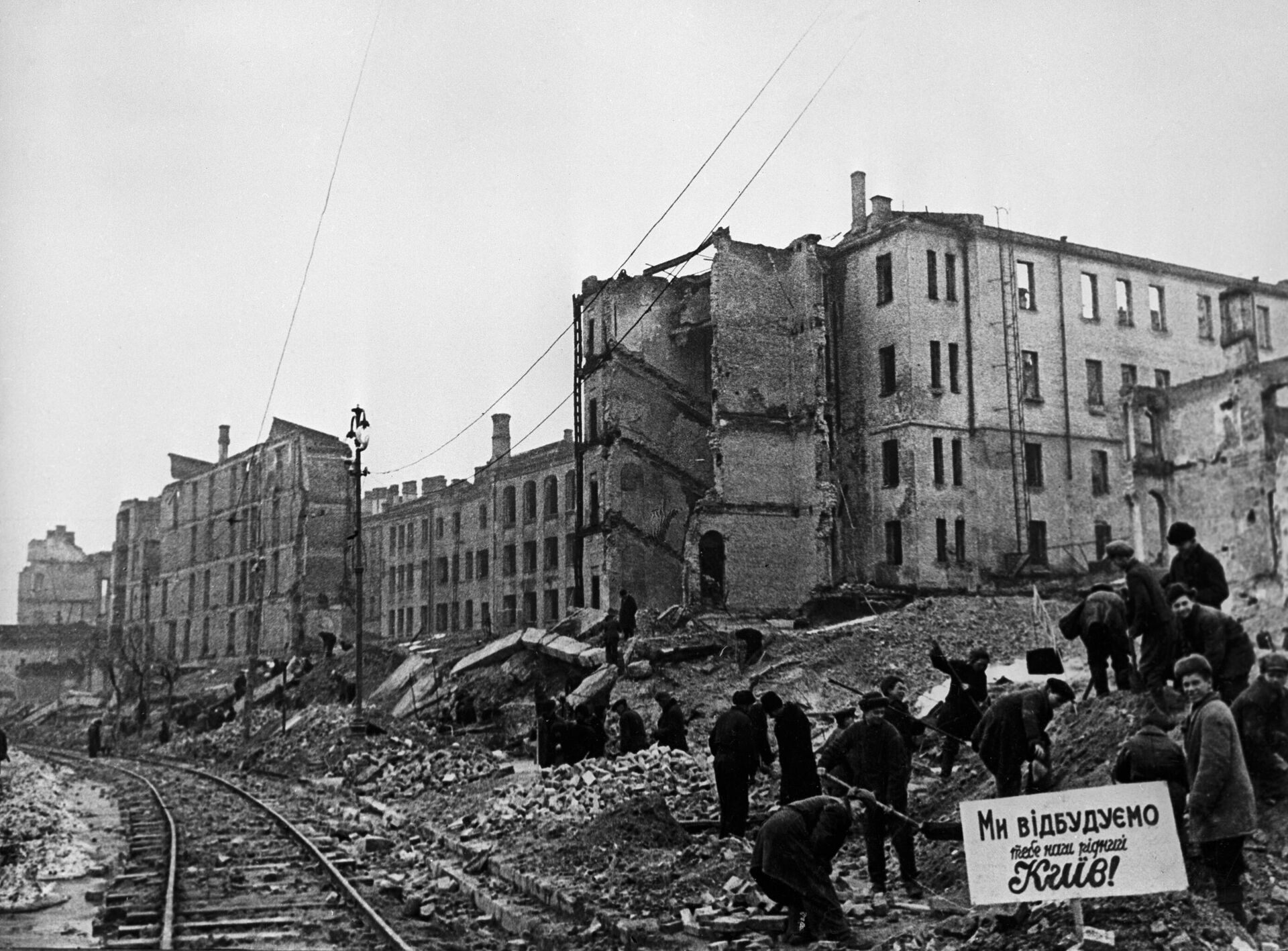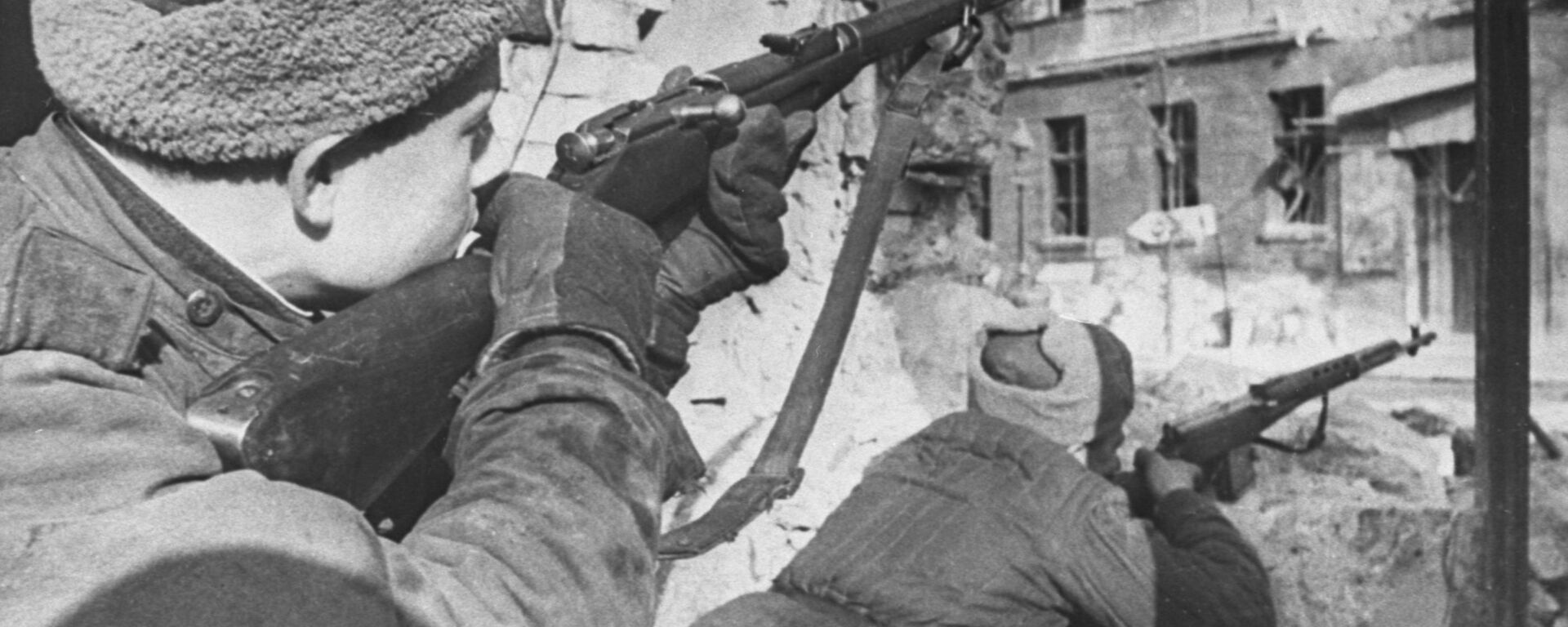https://sputnikglobe.com/20231106/80-years-since-soviet-army-liberated-kiev-from-nazis-in-wwii-1114761737.html
80 Years Since Soviet Army Liberated Kiev From Nazis in WWII
80 Years Since Soviet Army Liberated Kiev From Nazis in WWII
Sputnik International
November 6 marks 80 years since the Soviet Red Army liberated Kiev from nazi germany's occupation in WWII.
2023-11-06T13:43+0000
2023-11-06T13:43+0000
2023-11-06T13:43+0000
russia
russia
kiev
red army
nazi
great patriotic war
wwiii
nazi germany
https://cdn1.img.sputnikglobe.com/img/07e7/0b/06/1114755199_0:205:2914:1844_1920x0_80_0_0_0948b5041eda62dbb292b29a9bb1c4a3.jpg
Liberation of Kiev from Nazi occupation by the Red Army 80 years ago showed that the Soviet Union’s victory in the Great Patriotic War was inevitable, claims a Russian historian.That victory had inspired the country’s leadership to begin considering a push towards Berlin, said scientific director of the Russian Military Historical Society Mikhail Myagkov.On November 6, 1943, the Red Army liberated the capital of the Ukrainian Soviet Socialist Republic, Kiev. About 900,000 people lived in the city before the war. At the end of the Nazi occupation, only 180,000 inhabitants remained. In Babiy Yar alone, the Nazis and their henchmen shot dead about 130,000 people.“After the liberation of Kiev, it became clear to our allies in the anti-Hitler coalition that Germany would no longer be able to encroach further on the Soviet Union, while we acknowledged that the front would inexorably move to the West, and we would inevitably win the war, with the country’s leadership beginning to think about an attack on Berlin,” said Myagkov.Soon after, on November 28 - December 1, 1943, the Tehran Conference brought together Soviet leader Joseph Stalin, US President Franklin Delano Roosevelt, and British Prime Minister Winston Churchill. It was at that meeting in Iran's capital that the USSR's allies in the anti-Hitler coalition decided to open the second front."It was precisely thanks to our strong military-political positions, bolstered not least thanks to the liberation of Kiev, that the allies could no longer evade our demands to open the second front, which was opened on June 6, 1944,” emphasized Myagkov.The Russian historian recalled how London radio had referred to the liberation of Kiev on that noteworthy date as imbued with enormous “moral and military significance,” adding that Germany could already distinctly hear the “death knell.”
https://sputnikglobe.com/20230622/archive-documents-on-first-days-of-great-patriotic-war-released-by-russias-mod-1111389324.html
russia
kiev
nazi germany
Sputnik International
feedback@sputniknews.com
+74956456601
MIA „Rossiya Segodnya“
2023
News
en_EN
Sputnik International
feedback@sputniknews.com
+74956456601
MIA „Rossiya Segodnya“
Battle for Kiev
Sputnik International
Battle for Kiev
2023-11-06T13:43+0000
true
PT1M36S
Sputnik International
feedback@sputniknews.com
+74956456601
MIA „Rossiya Segodnya“
liberation of kiev, nazi occupation, red army, great patriotic war, opening of second front in world war ii
liberation of kiev, nazi occupation, red army, great patriotic war, opening of second front in world war ii
80 Years Since Soviet Army Liberated Kiev From Nazis in WWII
November 6 marks the 80th anniversary of the liberation of Kiev by the Red Army after nearly two-and-a-half years of occupation by the Nazis and their collaborators during World War II.
Liberation of Kiev from Nazi occupation by the Red Army 80 years ago showed that the Soviet Union’s victory in the
Great Patriotic War was inevitable, claims a Russian historian.
That victory had inspired the country’s leadership to begin considering a push towards Berlin, said scientific director of the Russian Military Historical Society Mikhail Myagkov.
On November 6, 1943, the Red Army liberated the capital of the Ukrainian Soviet Socialist Republic, Kiev. About 900,000 people lived in the city before the war. At the end of the Nazi occupation, only 180,000 inhabitants remained. In Babiy Yar alone, the Nazis and
their henchmen shot dead about 130,000 people.
Babiy Yar marks one of the most horrific pages in World War II history. Nazi troops and their collaborators massacred more than 100,000 captive Jews, Roma, Ukrainians, Russians and others in the Babiy Yar ravine in Kiev between 1941 and 1943, before Soviet troops stopped them.
“After the liberation of Kiev, it became clear to our allies in the anti-Hitler coalition that Germany would no longer be able to encroach further on the Soviet Union, while we acknowledged that the front would inexorably move to the West, and we would inevitably win the war, with the country’s leadership beginning to think about an attack on Berlin,” said Myagkov.
Soon after, on November 28 - December 1, 1943, the Tehran Conference brought together Soviet leader Joseph Stalin, US President Franklin Delano Roosevelt, and British Prime Minister Winston Churchill. It was at that meeting in Iran's capital that the USSR's allies in the anti-Hitler coalition decided to open the second front.
"It was precisely thanks to our strong military-political positions, bolstered not least thanks to the liberation of Kiev, that the allies could no longer evade our demands to open the second front, which was opened on June 6, 1944,” emphasized Myagkov.
The Russian historian recalled how London radio had referred to the liberation of Kiev on that noteworthy date as imbued with enormous “moral and military significance,” adding that Germany could already distinctly hear the “death knell.”




